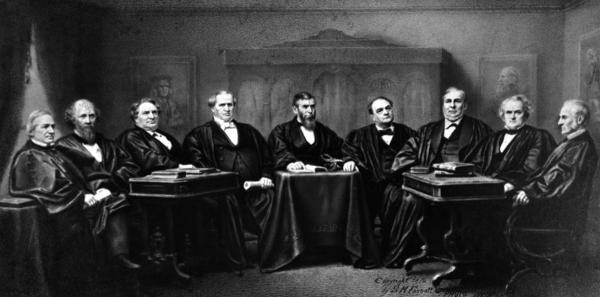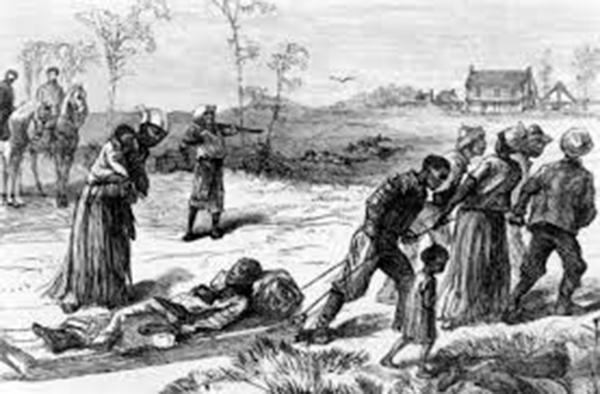Letter from a Member of the National Revolution Tour:
In drafting their near-total abortion ban, which is right now depriving millions of women of their fundamental and constitutionally protected right to abortion, lawmakers in Texas resorted to a sinister means of avoiding judicial review of the new law. They prohibited the state from enforcing the abortion ban and instead empowered private citizens to enforce it. In this way, they can claim that even though they passed a law that openly violates a Supreme Court ruling and is actively depriving millions of women of their constitutionally protected rights, the state of Texas is not violating the law because it is not the one enforcing it. Sure enough, the fascist-dominated Supreme Court has so far accepted this as an excuse to let the law go into effect.
On October 6, a federal judge named Robert Pitman objected strenuously to this and temporarily blocked the Texas Abortion Ban. He argued compellingly that the way the Texas law was written—the fact that it was empowering private citizens to deprive others of their constitutional rights—made it all the more essential for the federal government and courts to act on their responsibility to intervene. To make this argument he reached all the way back to the period of Reconstruction that followed the Civil War. He showed that it was precisely the refusal of Southern states to protect the constitutional rights of Black people from arson, lynchings, looting, and other forms of racist terror that was being carried out by the Ku Klux Klan and racist mobs that gave rise to the 14th Amendment and the Department of Justice in the first place. It was the responsibility of the federal government to protect the rights of Black people not only from being violated by state laws but also from being violated by private citizens and mobs. Judge Pitman argued this same principle applies today and gives the federal courts the responsibility to block the Texas Abortion Ban precisely to protect the rights of women from being violated by private citizens.
However, just 48 hours later, a higher court issued a temporary injunction against Pitman's decision, and the Texas Abortion Ban was fully back in effect.
While the final fate of Texas's abortion ban is not yet settled (it is still being challenged in the courts even as it is actively in effect right now), there are huge implications if the courts adopt the position that they have no role in protecting the constitutional rights of people from being violated by private citizens.
In fact, just as there is a historic precedent for Judge Pitman's correct argument that the federal government and courts have a duty to step in and protect these rights, there is also a historic precedent for what happens when the courts reverse this precedent and insist they have no such role.
Just a few short years after the passage of the 14th Amendment and the creation of the Department of Justice, the Supreme Court effectively gutted these protections. In its 1876 United States v. Cruikshank ruling, the Supreme Court overturned the convictions of three white men who were part of massacring approximately 150 Black people, arguing that because the massacre was carried out by private citizens, the federal courts had no role in protecting the rights of the Black people who had been massacred. This ruling set the stage for – and actively green-lighted – the 100 years of lynch mob terror that followed in which more than 4,000 documented lynchings took place!
Today, fascists are increasingly being mobilized to assault people for wearing masks or advocating for the vaccine, threaten school board members, intimidate Black and Brown voters, hunt down those who would assist women in accessing abortions and more. The implications of the courts claiming that the federal government has no role in stopping private citizens and mobs from depriving people of their constitutionally protected rights are enormous.
In this light, learning about American Crime Case #71: The Colfax Massacre of 1873... and the Supreme Court Stamp of Approval for Racist Terror, takes on even greater importance.
***
The 1876 Cruikshank Decision:
Supreme Court Legalizes Racist Lynching and Terror—as Long as It’s Carried Out by White Mobs, Not Formally by the States
After the Civil War ended outright slavery, the period of Reconstruction, when Black people were granted some fleeting, basic rights, lasted a mere 12 or so years, ending around 1877. Many people know how KKK night riders, lynchings, and savage white mob violence helped brutally extinguish this all-too-short period, which was followed by decades of Jim Crow, lynch mob terror.
They may not, however, be as familiar with the crucial role the “hallowed” U.S. Supreme Court played in stripping Black people of the rights supposedly guaranteed them under the U.S. Constitution and the 14th Amendment -- legalizing white supremacist terror and murder.
As the Equal Justice Initiative’s history of lynching sums up, in the 1870’s, “While white mobs attacked Black voters, the United States Supreme Court began an assault on the legal architecture of Reconstruction.”1
The Colfax Massacre and the 1876 Cruikshank Decision: A Turning Point Which Reverberated for Decades
On April 13, 1873, Black people demanding their right to vote in Colfax County, Louisiana were attacked by armed white supremacist mobs. There was a courageous attempt by Blacks to defend themselves but they were massacred.
“Over 300 heavily armed white men, most of them former officers and soldiers in the Confederate Army, shot, stabbed, burned, and maimed Black people seeking shelter in a courthouse,” revcom.us wrote in American Crime Case #71 on the massacre.2 “Many were killed as they tried to surrender. Historian Eric Foner described the Colfax massacre as the ‘bloodiest single instance of racial carnage in the Reconstruction era.’”
No state charges were brought against any of the murderers. Eventually Federal charges were brought against dozens in the white supremacist mob under the Enforcement Act of 1870, which prohibited conspiracies to deprive people of their 14th Amendment rights and enabled the federal government to prosecute any crime committed as part of such a conspiracy.3 Only three men were convicted, the convictions were appealed, and the case, United States v. Cruikshank (William J. Cruikshank was one of those convicted), eventually made its way to the Supreme Court. The Supreme Court decided the case in 1876, overturning the guilty verdicts on the three racist killers.

Supreme Court members during Cruikshank decision.
The States' Rights, White Supremacists Logic of the Court’s Decision
In Cruikshank, the court made a number of arguments that directly diminished the government's authority and put it in the hands of the state. The ruling argued that all U.S. citizens are subject to two governments, their state government and the national government, and it then defined the scope of each. Strikingly, the Court said the protections of the Bill of Rights didn’t apply to actions by state governments, only to those of the federal government.
For instance, the First Amendment right to assembly (in this case Black people gathering to demand the right to vote, "was not intended to limit the powers of the State governments in respect to their own citizens, but to operate upon the National Government alone," thus "for their protection in its enjoyment ... the people must look to the States. The power for that purpose was originally placed there, and it has never been surrendered to the United States." At the time, power in these states was increasingly in the hands of violent white supremacists.
But the core of the Court’s acquittal of the white murderers was its ruling that the Due Process and Equal Protection clauses of the 14th Amendment (and therefore the relevance of the Enforcement Acts) applied only to actions by the states, not to actions by individuals: "The fourteenth amendment prohibits a State from depriving any person of life, liberty, or property, without due process of law; but this adds nothing to the rights of one citizen as against another.”4
“[T]he Court ruled that the Fourteenth Amendment provided protection only against actions of the State, not against individual violence, and the power of the federal government was ‘limited to the enforcement of this guaranty,’” writes the Equal Justice Initiative. “As a result, the Enforcement Act was a dead letter: African Americans in the South were to be left at the mercy of white terrorists, so long as the terrorists were private actors.”5
In other words, federal law cannot protect Black people from violations of their civil rights—or mass murder—committed by mobs, only violations of those rights carried out by government agencies.
The reverberations of this decision were immediate: “When Cruikshank was decided, the Justice Department dropped 179 Enforcement Act prosecutions in Mississippi alone. Violence continued to spread, and increasingly, attacks on African Americans in the South were carried out by undisguised men in broad daylight.6
The U.S. Supreme Court’s stamp of approval for KKK, lynch mob terror was reaffirmed a few years later, when it invoked the Cruikshank ruling in a case concerning a lynch mob in Tennessee. It ruled that “Lynching was found not to be a federal matter, because the mob consisted only of private individuals.”7
These rulings green-lighted 100 years of lynch mob terror and thousands of murders. The Equal Justice Initiative “has documented 4084 racial terror lynchings in twelve Southern states between the end of Reconstruction in 1877 and 1950.”
